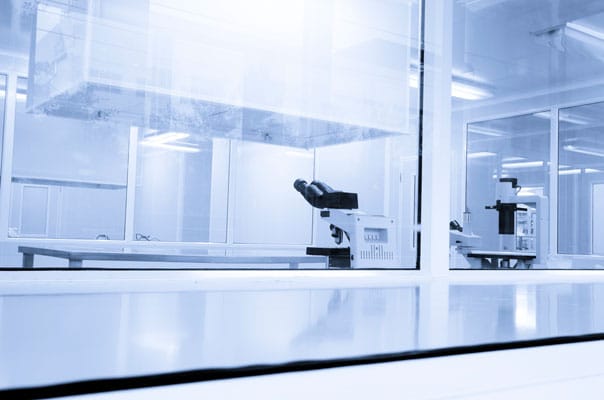If you don’t already know the terms “cleanroom” and “controlled environment,” you might think they’re the same thing. After all, they sound pretty similar. However, these two terms cannot be used interchangeably.
While many laboratories are considered controlled environments, cleanrooms are built with deliberate purposes to meet very particular specifications. Sending someone who needs a cleanroom into a controlled environment could lead to some nasty repercussions — at best, product defects, and at worst, danger with hazardous materials.
So, what’s the difference?
Controlled environments
A controlled environment, or critical environment, may share a few similarities with a cleanroom, but with far fewer standards. Think of a controlled environment as a cleanroom’s more relaxed cousin. All you need for a controlled environment is controlled segregation, temperature, and pressure.
A controlled environment might be used for coordinate measuring machine rooms, packaging rooms, or simple laboratories. Controlled environments are far cheaper than cleanrooms, as their requirements are so few, and the products required to make them are generally less expensive. Temperature might be controlled with insulated panels, pressurization is required to prevent outside air from getting in, and it needs to be built separately from external environments. But that’s all it takes.
Cleanrooms
In contrast, cleanrooms tend to require more sophisticated products and architecture, with their seemingly endless lists of standards that vary by industry. They’re typically used to manufacture pharmaceuticals, biotechnology, medical devices, semiconductors for electronics, as well as critical process manufacturing used by the Department of Energy and military optics.
Cleanrooms are controlled environments that are totally free of contaminants like dust, chemical vapors, aerosol particles, or airborne microbes. Air quality control, exceptional equipment and surface standards of cleanliness, and specific operational protocols all ensure that cleanrooms are fully contaminant-free. Tiny particles must be filtered out, ventilation must be exceptional, temperature and humidity must be controlled, static pressure must be high, architectural design and equipment must ensure unrestricted air flow, electrostatic discharge protective materials must prevent damage, surface materials must be resistant to breakdown and prevent particle adherence — the list goes on and on.
This is why it’s so important to know the difference between cleanrooms and controlled environments: cleanrooms are highly specific and specialized, and many of the industries that rely on them can have a major impact on people’s lives through medicine or the military. It’s crucial to get it right and know the difference between controlled environments and cleanrooms if you ever plan to enter an industry in which they’re used.
How CritiCore can help
If you’re entering one of these industries now or are already familiar with controlled environments and cleanrooms, you know that the right garments are essential no matter the standards at play. Whether you need cleanroom apparel or laboratory garments for your controlled environment, CritiCore Protective Wear is more than prepared to supply any clothing you might need. Contact your distributor or our service team to get started.

